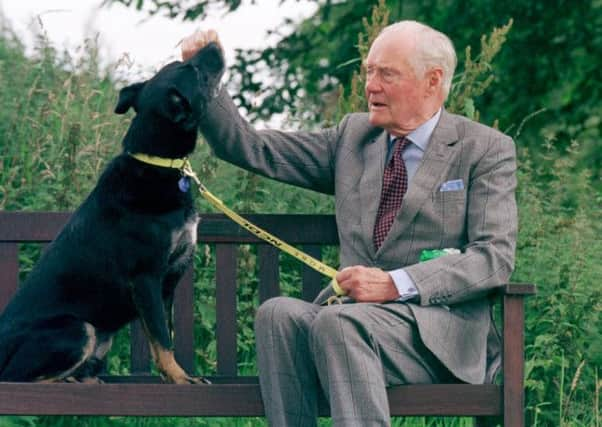Obituary: Arthur Valerian Wellesley, Duke


Arthur Valerian Wellesley, 8th Duke of Wellington.
Born: 2 July, 1915, in Rome.
Died: 31 December, 2014, in Hampshire, aged 99.
The 8th Duke of Wellington, who died on Hogmanay in his 100th year, was the aristocrat whose insistence on rigorous horsemanship was used years later by one of his men in what became the last cavalry charge in Scotland.
A stickler for tradition and a staunch military man, the outward appearance of His Grace hid an inner warmth and an ability to reach out to people. He warmed to Walter Hogg, a young Fifer from Auchterderran, who in 1951 served in the Blues and Royals of the Household Cavalry. The Duke, then Marquess of Douro, was CO.
Advertisement
Hide AdAdvertisement
Hide AdPart of ducal training for the young Hogg’s troop was to be able to gallop stirrup-to-stirrup, and Douro proved merciless in drilling his men again and again to master this difficult technique. In due time, Hogg earned Douro’s praise for his ability in marshalling his companions at the charge.
When in 1980, rioting Rangers and Celtic fans erupted on to the pitch at Hampden at the conclusion of the Cup Final at Hampden, public order among the 90,000 packing the stadium was in danger of being lost.
Chief Inspector Hogg, astride his horse Chieftain outside the stand, rallied his mounted officers tersely: “We’re going in.” They clattered into the ground to the ferment of a full-scale pitch invasion.
“Get your shillelaghs out, and keep stirrup to stirrup,” ordered Chief Inspector Hogg.
At the charge, the horses jumped over bodies, wheeling and splitting the crowds. Journalist and horsewoman Melanie Reid wrote long afterwards: “It was an extraordinary re-enactment of the timeless, one-sided battlefield clash of horse and footsoldier… some terrifying medieval pageant…”
Arthur Valerian Wellesley – he was known to his family as Valerian – inherited a Latin name meaning Valiant. In its way, this reflected the family motto: “Fortune is the companion of valour.” He lived up to seers’ views that people with this name tend to be leaders rather than followers, and who possess powerful personality.
In 1944, he married Diana McConnel, descendant of a Galloway farmer, after a whirlwind romance and to a backdrop of parental misgiving about wartime marriages being shortlived. The pair stayed in love for 66 years until the Duchess’s death in 2010.
The Duke’s forthright and forceful personality, combined with his natural love of people, ensured that he was his own man, and did not remain under the shadow of his ancestor the victor of Waterloo.
Advertisement
Hide AdAdvertisement
Hide AdNevertheless, he remained in close touch with all matters concerning the battle – the 200th anniversary of which is celebrated on Thursday, 18 June this year.
He was of course heir to the many gifts poured on the Victorious 1st Duke, including estates in Portugal, Spain and Belgium as well as a house at Hyde Park Corner, the address of which remains to this day “1 London”.
GORDON CASELY